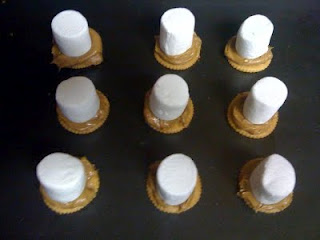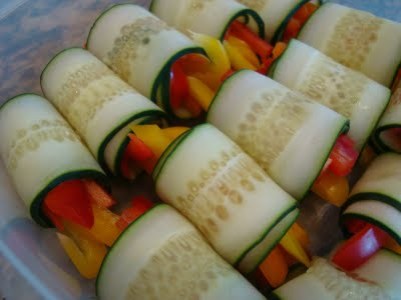For those of you looking for new ingredients to incorporate into your cooking this spring-into-summer, I’m going to turn back to the unusual classics of cuisine! Spring-into-summer is a great time to try new ingredients, pull out old ones in a new way, or reinvent that delicious dish from your childhood. Let’s take a peek at two delicious ingredients and ways that you can bring fresh fruits and vegetables into your life.
Garlic Scapes are an incredible part of this traditional vegetable that most people overlook. In fact, I was just put on their trail a few days ago, and now I can’t get enough! They’re the twirly, curly, green-onion-y growth of the garlic (that thing that starts to sprout if you let your garlic sit too long). Cut off long before garlic harvesting, these sprouts are actually a delicious ingredient that can be chopped up into pestos, sauces, and other dishes.

So what’s the best way to use garlic scapes? From what I’ve heard and in my personal opinion, it’s by making a pesto. Thick on crackers, thin in soups, pesto is a delicious addition to any lunch or dinner. Throw a dollop into your slow-cooker or spread a layer on a boring sandwich for a garlic-y, basil-y depth that you weren’t expecting!
- 10 Garlic Scapes
- 1/3 cup nuts (such as pistachios or almonds)
- 1/3-1/2 cup grated Parmesan
- Salt and Pepper
- 1/3-1/2 cup olive oil
Blend and mix for deliciousness that you won’t forget! You’ll never go back to ordinary garlic cloves after this!
And what would summer be without the traditional but oft o’erlooked Gooseberry? Even better, let’s throw these tart-sweet treats into a pie that will wow any of your neighbours! These fuzzy berries can be used when they are firm and tart or soft and sweet, so be conscious of what sort of gooseberries you’re picking to put in your pie, as you may want to add or remove sugar tending to their ripeness.

I’m going to take this recipe from AllRecipes, but I’ve altered it, so if you would like to look at the original, go here. So, let’s take a peek at this pie, shall we?
- 3 cups gooseberries
- 1 cup sugar
- 2 and 1/2 tblsp quick-cooking tapioca
- 1/2 tsp salt
- double crust pastry
- 2 tblsp milk
- 1 further tblsp sugar

- Stem and rinse berries.
- Crush 1/2 cup berries in the bottom of a saucepan. Combine sugar, tapioca, and salt; mix with crushed berries. Cook and stir until mixture boils. Cook for 2-3 more minutes. Remove from heat, and add in remaining whole berries.
- Pour fruit filling into pastry. Adjust top crust , cut slits for escape of steam. Brush with milk and sugar.
- Bake at 400 degrees F (205 degrees C) for 40-45 minutes.
Good luck with your gooseberries and garlic scapes! Now you have two great recipes to try out and cook as the weather starts to get hot. Celebrate a ripe season with these great recipes and feel free to leave any comments about posts you’re interested in. We’d love to hear about what themes are your favourites and what you’d like us to write more about! Cheers!
-A.


 -A.
-A.


 But that’s not even all! Next, you’ll want to add some sort of meat. Cold cuts that you use for double-faced sandwiches will do. Turkey and ham are staples that most people will enjoy, and this is a great way to use old chicken.
But that’s not even all! Next, you’ll want to add some sort of meat. Cold cuts that you use for double-faced sandwiches will do. Turkey and ham are staples that most people will enjoy, and this is a great way to use old chicken. Next, fill these thin strips with pieces of vegetables (perhaps even meats!), such as strips of pepper, as demonstrated, avocado, pine fruits, apples, mangoes, more cucumber, sprouts… Add a dollop of peanut butter with a few raisins for picky, confused eaters.
Next, fill these thin strips with pieces of vegetables (perhaps even meats!), such as strips of pepper, as demonstrated, avocado, pine fruits, apples, mangoes, more cucumber, sprouts… Add a dollop of peanut butter with a few raisins for picky, confused eaters.



 Step 5: Snap Them In and Enjoy! It’s time to take pictures of those lovely new recipe binders sitting on your pretty shelf. This means no more sifting through for lost recipes, no more using the same ones in the front, finding those great family recipes that make you laugh (Sock-It-To-Em Cake, anyone?) and finally getting them all sorted, set, and protected. The paper protectors will make sure that no more spatters ruin your grandmother’s handwriting, and the binder will let you snap them out and carry them around the kitchen as you stir and whisk up family tradition.
Step 5: Snap Them In and Enjoy! It’s time to take pictures of those lovely new recipe binders sitting on your pretty shelf. This means no more sifting through for lost recipes, no more using the same ones in the front, finding those great family recipes that make you laugh (Sock-It-To-Em Cake, anyone?) and finally getting them all sorted, set, and protected. The paper protectors will make sure that no more spatters ruin your grandmother’s handwriting, and the binder will let you snap them out and carry them around the kitchen as you stir and whisk up family tradition.